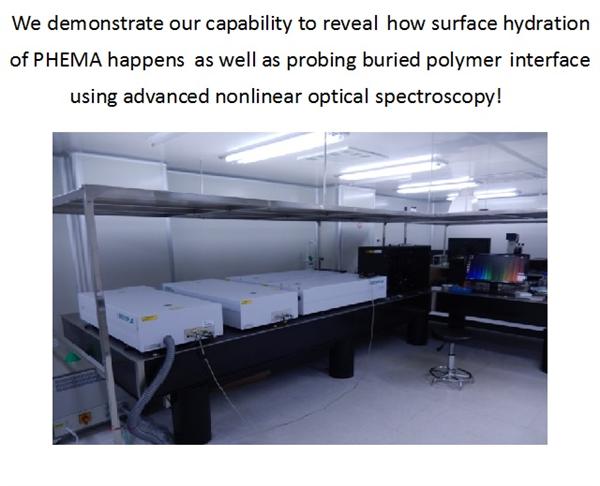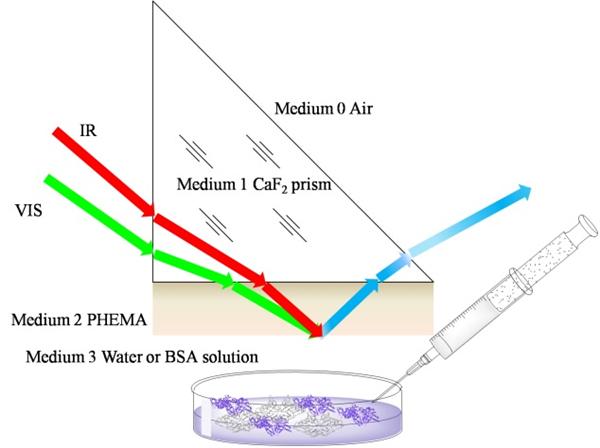Detecting Surface Hydration of Poly(2-hydroxyethyl methacrylate) in Solution in situ
作者:Xu Li, Bolin Li, Xiaodong Zhang, Chengcheng Li, Zhirui Guo, Dongshan Zhou, Xiaolin Lu*
关键字:Buried interface, PHEMA, SFG, Surface hydration
论文来源:期刊
具体来源:Macromolecules 2016, 49, 3116–3125
发表时间:2016年


Understanding the interfacial molecular structures of anti-fouling polymers in solutions is extremely important in research and applications related to chemistry, biology, and medicine. However, it is generally challenging to probe such buried solid/liquid interfaces in situ. We herein report a molecular-level study on detecting the interfacial molecular structures of an anti-fouling hydrogel material, poly(2-hydroxyethyl methacrylate) (PHEMA), in contact with water and bovine serum albumin (BSA) solution in situ using sum frequency generation (SFG) vibrational spectroscopy. To compare to and validate our in situ experiments, molecular-level structures of the substrate/PHEMA interface before and after water exposure were also detected. The detected strong O-H vibrational signals from water and hydroxyethyl, and carbonyl vibrational signals from PHEMA prove that the PHEMA surface hydration was attributed to the interaction between water and PHEMA side hydrophilic groups. SFG experimental results verify that the adsorbed BSA molecules at the PHEMA/solution interface were disorderly arranged, supported by data from the laser scanning confocal microscopic (LSCM) experiment. This indicates the weak interaction between the BSA molecules and PHEMA surface. This direct detection of the surface hydrated structures of PHEMA sheds light on understanding the interfacial properties of antifouling materials in aqueous environments. The capability reported here to probe the PHEMA/solution interface and the hidden substrate/PHEMA interface after water exposure can be applied to investigate a broad range of interfaces of antifouling materials.
http://pubs.acs.org/doi/abs/10.1021/acs.macromol.6b00389